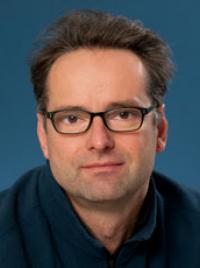Current Status of Precision PDT Treatment Planning: Physical and Biological Considerations
Hosted By: Therapeutic Laser Applications Technical Group
18 August 2021 12:00 - 13:00
Eastern Time (US & Canada) (UTC -05:00)Photodynamic therapy (PDT) treatment planning is on the verge of entering the age of precision and personalized medicine replacing the current empirical treatment protocols. Achieving precision medicine requires a photon source placement optimization algorithm utilizing the target and organs at risk anatomy, their population average optical properties and photosensitizer concentrations. Ideally, the planning process must also consider the tissue PDT responsivity thus not planning for a required fluence rate in the different tissues, but for a required dose of cytotoxic radicals produced throughout the treatment planning volume. To include the tissues PDT responsivity in the planning process requires some standardization of data collected in preclinical and clinical studies, preferably to satisfy multiple PDT-dose models.
It’s acknowledged that the inter- and intra-patient variability of the tissue optical properties and the photosensitizer uptake remains a major obstacle to fully exploit the dual selectivity of PDT, resulting even with the application of precision PDT treatment planning in highly variable treatment outcomes. Enabling personalized PDT treatment planning requires the ability to quantify or predict the locally variable tissue optical properties, photosensitizer accumulation and oxygen availability.
In this webinar, Lothar Lilge will review different PDT treatment response models required for treatment planning, publicly available databases for population average tissue optical properties or means to estimate the optical properties and population-averaged photosensitizer tissue concentrations. General approaches to quantify the locally varying optical properties, photosensitizer and oxygen concentration will be reviewed including their spatial resolution under considerations of the required resolution for light-based therapies. The possibilities of using clinical imaging technologies to predict photosensitizer and oxygen uptake will be discussed.
What You Will Learn:
- Knowledge of the particular anatomy, the population average photosensitizer concentration, tissue optical properties and tissue responsibility of the target and organs at risk, which are required in combination with a model predicting the local PDT dose, for precision PDT.
- How to measure the local tissue optical properties and the direct/indirect methods to quantify the local photosensitizer and oxygen concentrations necessary for achieving personalized PDT treatment.
- How to use clinical imaging technology to aid in PDT treatment planning beyond the photosensitizer concentration.
- PDT SPACE and open access online PDT treatment planning tool will be presented.
Who Should Attend:
- Students, scientists, physicians interested in photodynamic therapy and methods of realizing precision PDT planning for improving treatment outcomes
- Researchers studying tissue optical properties in context of light-based therapies
About the Presenter: Lothar Lilge, Senior Scientist, Princess Margaret Cancer Centre; Professor, Medical Biophysics, University of Toronto
 Dr. Lothar Lilge is a Professor in the Department of Medical Biophysics at the University of Toronto and Senior Scientist at the Ontario Cancer Institute, Princess Margaret Cancer Centre, University Health Network. He obtained his PhD from University of Muenster, Germany. Dr. Lilge's extensive PDT experience, which spans 30 years, includes basic science, pre-clinical and clinical work in all areas of photodynamic therapy including photodiagnosis, breast, bladder and brain cancer related PDT, vascular PDT and antimicrobial PDT. He has worked to develop new light sources including ultra-fast lasers, created improved diffuser technology, optimized dosimetry, evaluated next generation photosensitizers, led numerous global research teams and participated in multiple international collaborations. Dr. Lilge has contributed to numerous key publications that have advanced the field of photodynamic therapy globally and continues to collaborate in clinical trials around the world.
Dr. Lothar Lilge is a Professor in the Department of Medical Biophysics at the University of Toronto and Senior Scientist at the Ontario Cancer Institute, Princess Margaret Cancer Centre, University Health Network. He obtained his PhD from University of Muenster, Germany. Dr. Lilge's extensive PDT experience, which spans 30 years, includes basic science, pre-clinical and clinical work in all areas of photodynamic therapy including photodiagnosis, breast, bladder and brain cancer related PDT, vascular PDT and antimicrobial PDT. He has worked to develop new light sources including ultra-fast lasers, created improved diffuser technology, optimized dosimetry, evaluated next generation photosensitizers, led numerous global research teams and participated in multiple international collaborations. Dr. Lilge has contributed to numerous key publications that have advanced the field of photodynamic therapy globally and continues to collaborate in clinical trials around the world.
